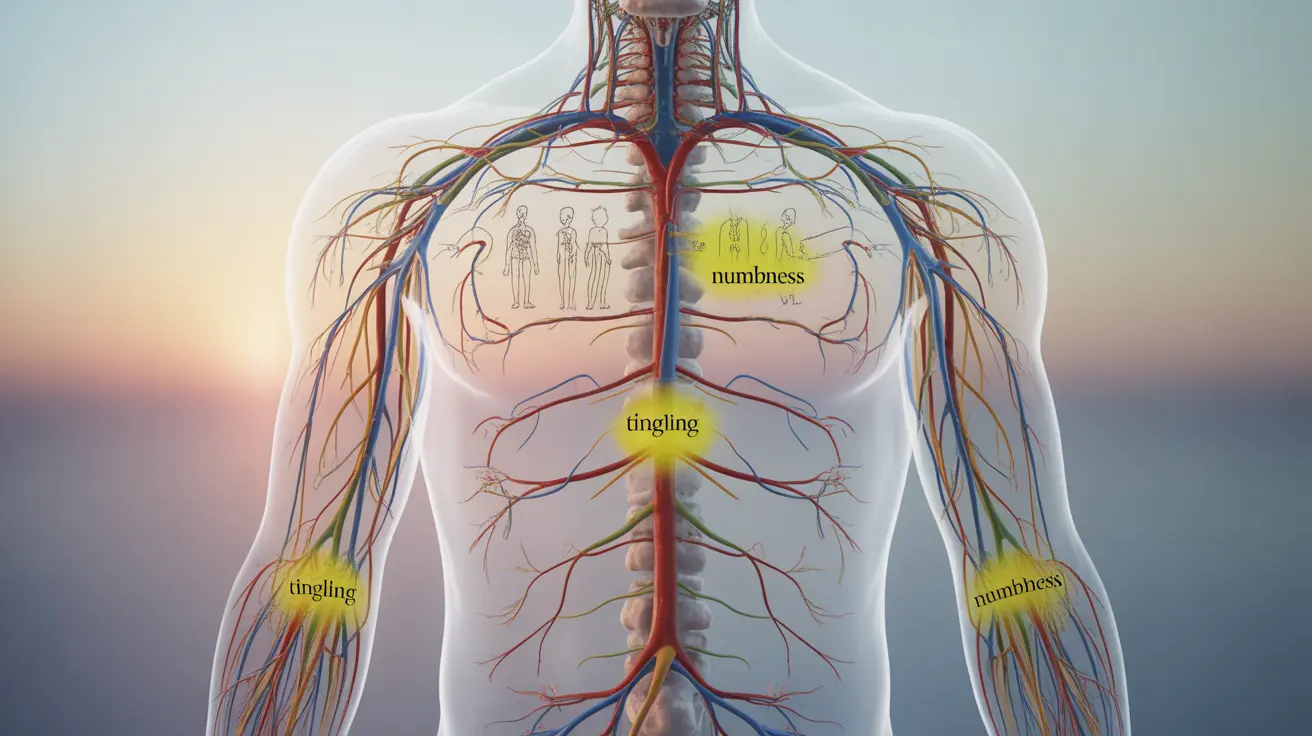Paresthesia, commonly experienced as tingling, numbness, or a "pins and needles" sensation, is a neurological condition that can affect various parts of the body. While temporary paresthesia is often harmless, such as when your foot "falls asleep" after sitting in an awkward position, chronic paresthesia may signal an underlying medical condition requiring attention.
This comprehensive guide explores the causes, diagnosis, and treatment options for paresthesia, helping you understand when these sensations are normal and when they warrant medical evaluation.
Common Causes of Paresthesia
Paresthesia can result from various factors, ranging from simple pressure on nerves to more complex medical conditions:
Temporary Causes
- Prolonged pressure on nerves
- Poor posture
- Crossing legs for extended periods
- Sleeping position affecting nerve compression
- Hyperventilation
Medical Conditions
- Diabetes
- Multiple sclerosis
- Carpal tunnel syndrome
- Peripheral neuropathy
- Vitamin B12 deficiency
- Cervical spine problems
Diagnosing Chronic Paresthesia
When paresthesia becomes persistent or concerning, healthcare providers may employ several diagnostic approaches:
Physical Examination
Doctors typically begin with a thorough physical examination and medical history review. They may test your reflexes, muscle strength, and sensory responses to identify potential neurological issues.
Diagnostic Tests
- Blood tests to check for diabetes and vitamin deficiencies
- Nerve conduction studies
- Electromyography (EMG)
- MRI or CT scans
- Spinal fluid analysis in some cases
Treatment Approaches
Treatment for paresthesia varies depending on the underlying cause:
Conservative Management
- Physical therapy
- Posture improvement
- Ergonomic modifications
- Lifestyle changes
- Vitamin supplementation when deficient
Medical Interventions
- Medications for underlying conditions
- Anti-inflammatory drugs
- Nerve pain medications
- Physical therapy
- Surgery in severe cases
Prevention and Self-Care
Several strategies can help prevent or manage paresthesia:
- Maintain good posture
- Take regular breaks from repetitive activities
- Exercise regularly to improve circulation
- Maintain a balanced diet rich in essential vitamins
- Avoid prolonged pressure on nerves
- Practice proper ergonomics at work
Frequently Asked Questions
What causes the tingling and numbness sensations known as paresthesia?
Paresthesia can be caused by temporary pressure on nerves, poor posture, or underlying medical conditions such as diabetes, multiple sclerosis, or vitamin deficiencies. The sensation occurs when nerve signals are disrupted or compressed.
How is chronic paresthesia diagnosed and what tests might a doctor perform?
Doctors diagnose chronic paresthesia through physical examinations, blood tests, nerve conduction studies, EMG, and imaging tests like MRI or CT scans. The specific tests ordered depend on the suspected underlying cause.
What treatment options are available for persistent or severe paresthesia?
Treatment options include addressing underlying conditions, physical therapy, medications for nerve pain, lifestyle modifications, and in some cases, surgery. The approach depends on the root cause of the paresthesia.
Can vitamin deficiencies cause paresthesia, and how is it treated?
Yes, particularly vitamin B12 deficiency can cause paresthesia. Treatment involves vitamin supplementation, either through dietary changes or supplements, as prescribed by a healthcare provider.
When should I see a doctor about paresthesia symptoms that don't go away?
Seek medical attention if paresthesia persists beyond a few days, occurs frequently, affects your daily activities, or is accompanied by other symptoms like weakness, pain, or coordination problems.




